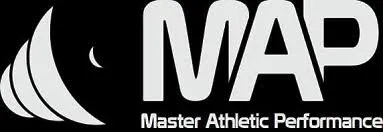Discover The Latest Blogs
Stay updated with Our Informative Blog Posts

Are You a Mental Midget?
Are You a Mental Midget?
by Paul Oneid April 01, 2024
You’ve hit a setback, maybe you’re hurt or you’re plateaued in your progress.
Some people quit - most people blame other people or their circumstances - but not you.
You’re someone who takes ownership - an athlete who is a master in your own mind, able to question, analyze, evaluate and make the appropriate decisions at the appropriate times.
You treat everything as data and don’t attach emotion to the outcomes you’re experiencing.
But, sometimes you’re your own worst enemy. Your mind runs wild and you overthink under pressure, can’t handle adversity and fail to perform when the stakes are highest.
You might not be a quitter, but you are a mental midget.
The act of lifting a barbell is a very complex process of kinesthetic inputs, interpretations and execution. Add in the environmental inputs of a competition and the elements outside of your control and there is a lot of sensory input to be processed and evaluated and that isn’t even including the amount of planning, preparation and sacrifice that goes into the competitive endeavor. These things run through the mind of any competitor and can be overwhelming at times. Often, the difference between those that thrive and those that fail is not any physical skill, or capacity, it is what goes on between the ears. If the mind is not trained to deal with these things, the body will not perform as well as it is capable of. If you unlock the mind, you can unlock a new level of performance that you never envisioned yourself capable of.
As Morpheus says in ‘The Matrix’ - “Free your mind, Neo”
In the world of mental health, the gold standard for anxiety and depression treatment is called Cognitive Behavioural Therapy, or CBT. CBT is a strategic process by which a practitioner will assist a patient to reshape their thought process surrounding their condition and the triggers that affect them. This is an intensive and active therapy involving homework, exposures and a copious amount of practice. The patient must buy in fully and participate actively for the therapy to work. When the patients do so, they are all but guaranteed success. Now, there are always more severe and complex cases, but there is a reason why CBT is the gold standard.
What does this have to do with lifting heavy weights? The answer is EVERYTHING!
Everyone gets nervous, anxious, or has triggers that impact their ability to process the pertinent information during a competition, or even a heavy session for that matter. Every person will be different. Some people can’t stop questioning whether their goals are too grand. For others, it may be whether the equipment is of good quality, or if the warm-ups are running too fast. Whatever it is, if you haven’t trained your mind to deal with these triggers and put yourself back in the proper mindset, you will not be able to execute your game plan. Your thought pattern will spiral and become intrusive into your thoughts about performing the lifts. You need to quiet your mind, get into that state of mind where you can perform optimally.
You need to get to “that place.”
Where is that place? Well, it’s different for each person, but we all fall along an inverted U curve of arousal. Too hyped up and you perform poorly and the same goes for being too lackadaisical - “that place” falls right in the middle at the top of that inverted U curve. Learning how to get yourself there, on command, under any circumstance takes a lot of practice.
The most common form of mental training is visualization. This is part of the Cognition element of CBT, pertaining to our thoughts and beliefs. There is a lot of research on the benefits of visualization on performance. This is often accompanied by some deep diaphragmatic breathing practices. Everything from the feel of the barbell in your hands, to the smell of the ammonia needs to be pictured in your mind as accurately as possible. The cues you use are repeated ad nauseum as you mentally go through every detail of your SUCCESSFUL performance. It is very important that no negative thoughts regarding the execution of the performance enter your thought process. Once you get to the competition, you will have already successfully performed the lift thousands of times. Our thoughts impact our belief in the successful performance.
Another common form of mental training is based on the principle of awareness. The behavioural element of CBT explains the effects of our actions. This tactic is best used by those who are proficient, experienced and are pursuing very high levels of achievement. High level achievement, especially at the world class level, requires almost convincing yourself that it is possible. This starts at the beginning of the training cycle. The athlete will look at the goals they have set and establish benchmarks required to reach them. As the athlete progresses through, they review each step and validate that they are ready to move towards the next benchmark. This puts the performance into perspective and brings forth the notion of, “I have completed ABC, which has prepared me to successfully execute XYZ.” The goal is no longer on top of a pedestal, it is simply the next step in a meaningful progression.
Visualization and awareness tap into just 2 of the 5 elements of CBT. Whatever element of mental training you use, you must keep in mind that it must be active, engaged and practiced repetitively. Just like the body, you must train the mind to unlock its potential. We must train the mind to dial in all the pertinent information and quiet the noise. Those that can get to “that place” often have the most success. Those that can’t? Those are the mental midgets that will never achieve anything great and make excuses for all their shortcomings, pun intended.




